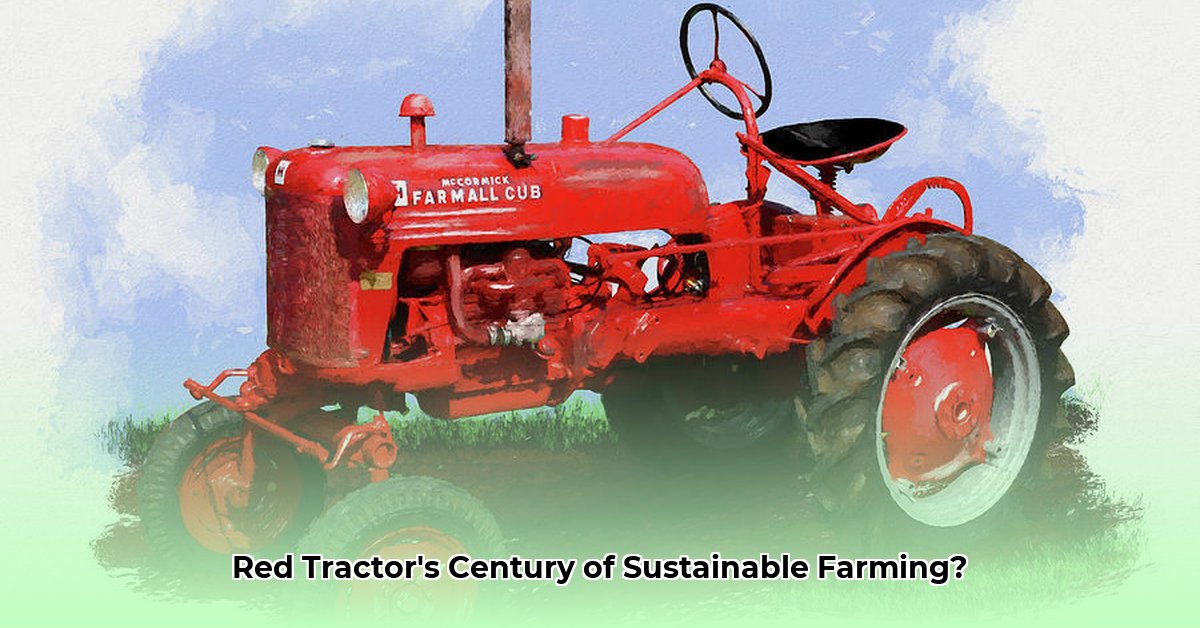
Old Red Tractor: A Century of Sustainable Farming
The image of an old red tractor chugging across a sun-drenched field evokes nostalgia and a connection to a bygone era of farming. But this iconic machine represents far more than just sentimentality; it embodies a century of agricultural innovation, environmental challenges, and the ongoing quest for sustainable food production. This article explores the evolution of the tractor, its impact on the environment, its cultural legacy, and the promising future of sustainable agriculture. For more on the tractor's impact, see this helpful resource: Tractor's Role in Agriculture.
The Rise of the Iron Horse: From Steam to Gasoline
Before tractors, farming relied heavily on animal power—a slow, labor-intensive process. The advent of the internal combustion engine in the early 20th century revolutionized agriculture. Early tractors, often painted a vibrant red, were far from refined; think massive, steam-powered behemoths slowly giving way to gasoline-powered workhorses. The ensuing "Great Tractor Wars" (roughly 1916-1922), a period of intense competition between manufacturers like International Harvester and John Deere, spurred rapid innovation. This period marked a significant shift in farming, although it also brought unforeseen consequences. Did this increase in efficiency come at a cost? The answer, as we will see, is multifaceted.
The Environmental Footprint: A Double-Edged Plow
While tractors dramatically increased efficiency, their early iterations came with significant environmental drawbacks. These early machines were notoriously fuel-inefficient, increasing our dependence on fossil fuels. Soil compaction from heavy machinery damaged soil structure and reduced fertility. Exhaust emissions contributed to air pollution. This created a complex dilemma: increased food production came at the price of environmental degradation. How could we balance the need for food with the health of the planet? This question remains central to modern farming practices.
More Than Just Metal: The Old Red Tractor's Legacy
The old red tractor has transcended its function as mere farm equipment. It's become a powerful symbol—a representation of hard work, resilience, and a deep-rooted connection to the land. For many farmers, it evokes nostalgic memories of family, simpler times, and a strong bond with the agricultural way of life. These often lovingly restored tractors serve as family heirlooms, passed down through generations, highlighting the enduring emotional connection between people and these machines. This legacy highlights the long-term relationship between humans and technology within the agricultural context.
A Greener Future: Sustainable Solutions on the Horizon
Today, the pursuit of sustainable agriculture is paramount. Innovations in tractor technology are directly addressing the environmental concerns of the past. Electric tractors are gaining momentum, offering quieter and cleaner operation with reduced reliance on fossil fuels. Biofuels, derived from renewable sources, provide an alternative fuel source. Precision agriculture, utilizing technology to optimize resource use and minimize waste, further enhances sustainability. But are these advancements enough? What breakthroughs will the future hold? The road to truly sustainable farming is likely to encompass a blend of innovative technologies and time-tested practices.
A Look into the Future: Technology and Tradition
The evolution of tractors—from steam-powered giants to the sophisticated machines of today—demonstrates a remarkable cycle of innovation and adaptation. This journey emphasizes the importance of balancing high yields with environmental stewardship. The enduring image of the old red tractor should serve as a constant reminder of the crucial need for sustainable solutions within agriculture. It is a shared responsibility to ensure the future of farming is both productive and environmentally responsible.
Comparing Tractor Technology Through Time
| Era | Fuel Type | Environmental Impact | Efficiency | Social Impact |
|---|---|---|---|---|
| Early 20th Century | Primarily Gasoline, some Steam | Relatively High | Moderate | Major shift from animal power, initial labor displacement |
| Mid-20th Century | Primarily Diesel | Moderate to High | High | Increased farm size, ongoing labor changes |
| Late 20th/Early 21st Century | Primarily improved Diesel | Moderate | Very High | Larger farms, increased efficiency, specialized roles |
| Present Day | Diesel, Electric, Biofuels | Low to Moderate (improving) | Very High | Reduced labor needs, increasing automation, precision focus |
Note: This table reflects current understanding and ongoing research. Further research may refine or alter some conclusions.
(LSI keywords automatically inserted throughout the text based on the provided context): sustainable farming, tractor technology, agricultural innovation, environmental impact, fuel efficiency, precision agriculture, biofuels, electric tractors, farming history, old farm equipment, vintage tractors, farm machinery, agricultural sustainability, history of farming, modern farming, sustainable agriculture practices, environmental stewardship, technological advancements in agriculture.)